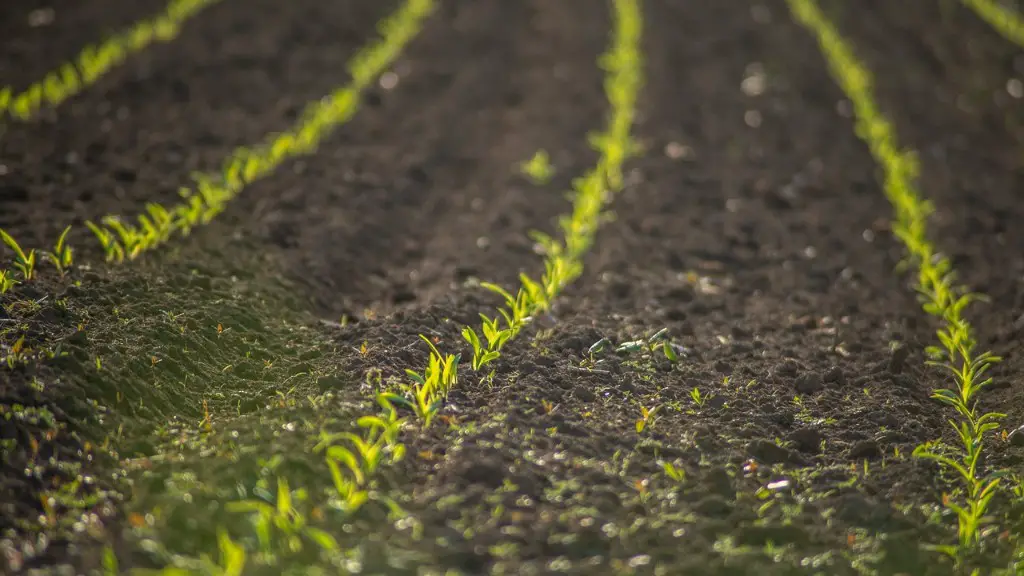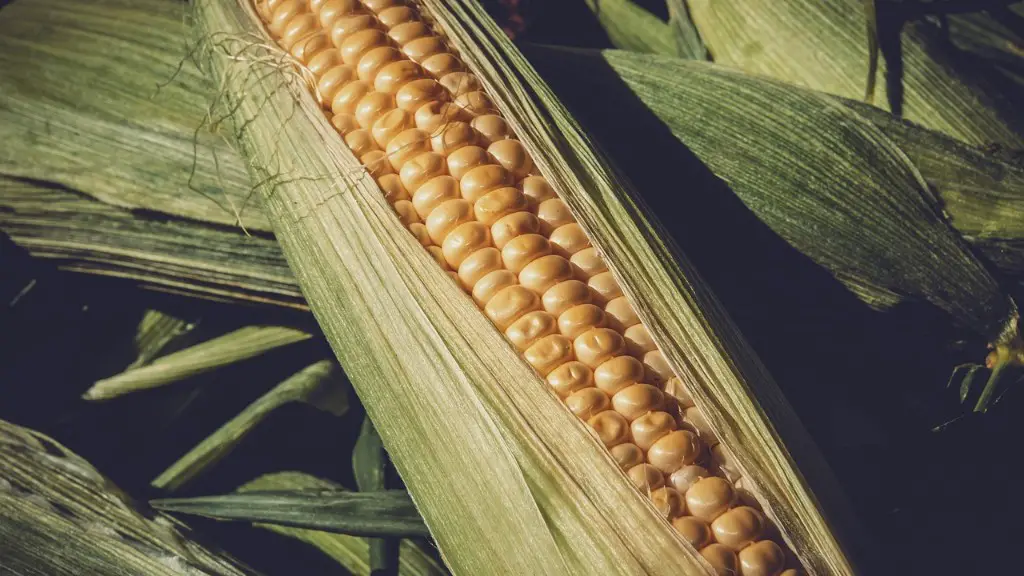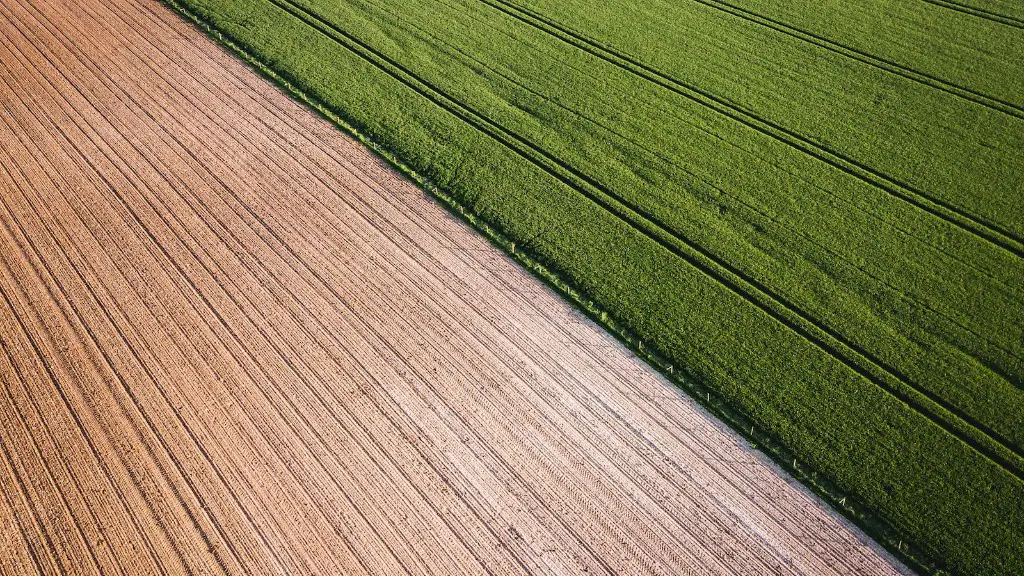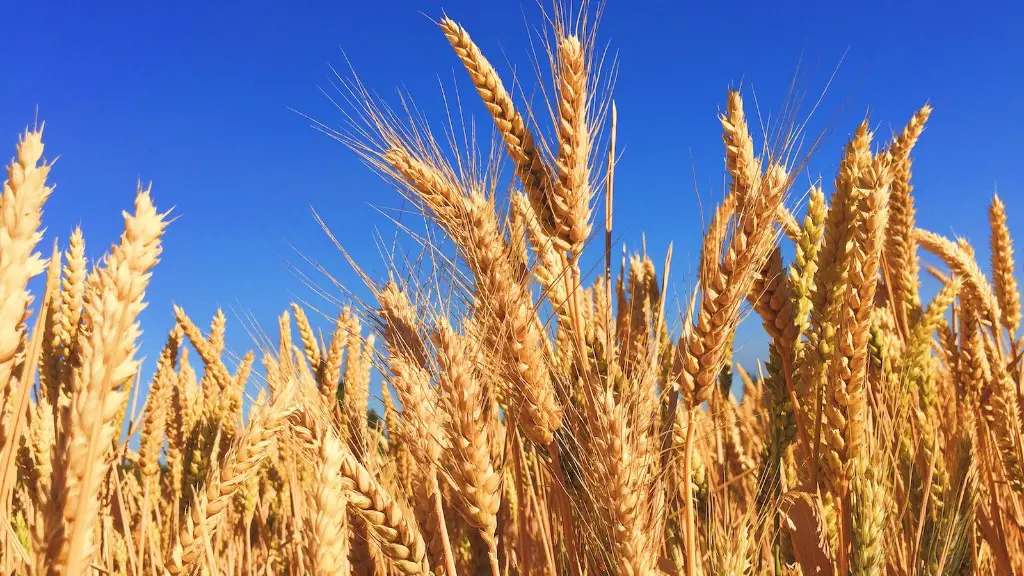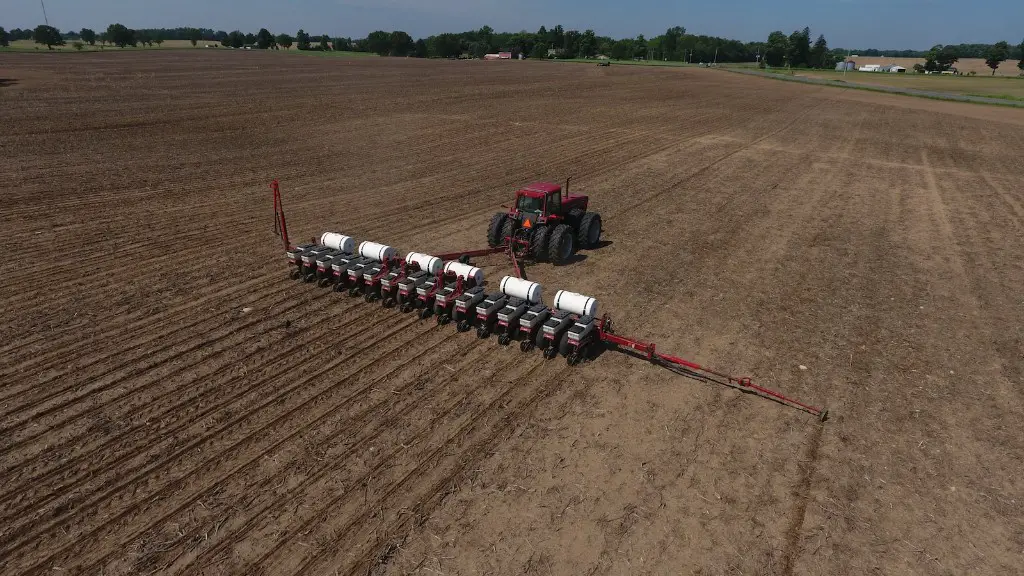Technology has always been a vital part of agriculture. It has helped farmers to increase yields, improve soil quality, and decrease labor costs. Today, there are many more ways that technology can help farmers to improve their operations. New developments in sensors, data analytics, and automation can help farmers to optimize their irrigation, planting, and harvesting operations. By using these tools, farmers can improve their efficiency and decrease their inputs costs. Additionally, new technologies can help farmers to reduce their impact on the environment. For example, sensor-based systems can help farmers to track their water usage and adjust their irrigation accordingly. This can help to reduce water use and minimize the impact of agriculture on local ecosystems.
The use of technology in agriculture has the potential to improve yields, decrease inputs costs, and decrease the amount of labor required. Technology can also help farmers to manage risk and increase transparency and traceability in the food supply chain.
What technology has had the biggest impact on agriculture?
Automated irrigation systems have revolutionized how water is supplied to crops, improving the efficiency of water distribution and the quality and quantity of agricultural production. These systems have had a significant impact on agriculture, making it more efficient and productive.
Agricultural innovation is an important area to watch in order to maintain a healthy and sustainable food supply. The following are 10 tech trends to watch in this field:
1. Bee vectoring technologies: Using bees to deliver crop-protecting chemicals could be a more efficient and environmentally-friendly way to control pests and diseases.
2. Precision agriculture: This technology uses sensors and mapping tools to optimize crop production by precisely targeting inputs like water, fertilizer, and pesticides.
3. Indoor vertical farming: This type of farming allows crops to be grown in vertically stacked layers in controlled indoor environments, using less land and water than traditional farming methods.
4. Livestock farming technology: New technologies are being developed to improve the efficiency of livestock farming, from robotic milking machines to GPS-guided grazing systems.
5. Laser scarecrows: These devices use lasers to deter birds and other animals from entering fields and damaging crops.
6. Farm automation: Robotics and other automation technologies are being increasingly used in agriculture to perform tasks like planting, weeding, and harvesting.
7. Real-time kinematic (RTK) technology: This technology can be used to improve the accuracy of GPS-
What are 5 examples of technologies used in agriculture
GIS software and GPS systems are some of the newest technologies being used in agriculture. They allow farmers to more accurately map out their fields and track the progress of their crops. Satellite imagery is another new technology that is being used to help farmers monitor their crops. Drone and other aerial imagery is also being used to help farmers with crop mapping and yield analysis. Farming software and online data are also being used more and more to help farmers keep track of their crops and make decisions about planting and harvesting.
There are a number of emerging technologies that are set to revolutionize the agriculture industry. These include:
1. Soil and water sensors: These sensors can help farmers to optimize irrigation and fertilizer use, as well as track soil moisture levels.
2. Weather tracking: By using weather tracking tools, farmers can be better prepared for extreme weather events.
3. Satellite imaging: Satellite imagery can be used to assess crop health, track yield potential, and even predict pests and diseases.
4. Pervasive automation: Automation technologies are becoming increasingly prevalent in agriculture, from robotic milkers to GPS-guided tractors.
5. Minichromosomal technology: This technology enables the creation of miniature cows that are more productive and efficient than traditional cattle.
6. RFID technology: RFID tags can be used to track livestock, monitor animal health, and even automate milking processes.
7. Vertical farming: Vertical farms can produce higher yields in a smaller footprint, and can be located in urban areas.
What are 2 technologies that helped improve farming?
Precision agriculture and robotic systems are becoming more and more commonplace in today’s agriculture. These systems allow businesses to be more profitable, efficient, and environmentally friendly. They also make agriculture safer by reducing the need for human labor.
The reaper was invented in the early 1800s and changed how farmers produced food. With the reaper, farmers could harvest small grains much faster than by hand. The thresher was invented in the early 1900s and changed how farmers removed kernels from straw. The thresher could be used to beat the grain on a threshing floor, which was much faster than by hand. The steam engine was invented in the early 1800s and changed how farmers powered their machines. The steam engine could be used to power the reaper and thresher, which made them much more efficient. The combine was invented in the early 1900s and changed how farmers harvested wheat. The combine could be used to cut, thresh, and clean the wheat in one operation, which saved a lot of time. The automobile was invented in the late 1800s and changed how farmers transported their goods. With the automobile, farmers could transport their goods to market much faster than by horse and wagon. The tractor was invented in the early 1900s and changed how farmers plowed their fields. The tractor could be used to pull a plow, which was much faster than by horse. Hydraulics were invented in the early 1900s and changed how farmers operated their machines. Hydra
What are the three major technologies that improved agriculture?
Agriculturists have made great strides in recent years, thanks in large part to technological advances. Tractors, new tillage and harvesting equipment, irrigation and air seeding technology have all contributed to higher yields and improved quality of food and fiber. As we continue to develop new ways to improve agriculture, we can only imagine the possibilities for the future.
Precision in the fields is important for farmers to get better yields. By using science and technology, farmers can collect data, analyze efficiency, monitor growth and quality, and more. This allows them to save money and improve their yields.
What new technology is used in agriculture
Drones are the future of agriculture. Equipped with technology-based sensors, drones can be used in precision agriculture – monitoring crop health, weed and pests detection, crop scouting, analysis of soil health, irrigation management and livestock management among others. Drones offer a cost-effective and efficient way to manage large tracts of land, and can help improve yields and decrease inputs.
High-yield crops, better irrigation, more and better use of fertilizers, improved market access and regulations, and better use of information technology are all important ways to increase agricultural productivity. However, land reform is also critical to ensuring that productivity gains are inclusive and benefit all farmers, not just a few.
What are 11 ways to improve agricultural productivity?
Land reforms are the most important factor in improving agricultural productivity. By distributing land more evenly and fairly among peasants, they can increase the amount of arable land available for farming. In addition, land reforms can help reduce the amount of land that is left fallow, as well as improve water management and Increase the use of nitrogen.
The farming industry is quickly adopting new technologies to improve efficiency and sustainability. Connected sensors, smart tractors, drones, machine learning (ML), artificial intelligence (AI), farm management software and smartphone apps are all being used to reduce water usage, fuel consumption, the use of fertilizers and carbon output. These systems are making a big impact on the industry and are poised to continue doing so in the future.
What agriculture needs to improve
One way of increasing agricultural yield per unit of land is by practicing conservation tillage. This involves leaving crop residue on the field surface and using it as a means of protecting the soil from erosion. Additionally, farmers can use cover crops and crop rotation to improve the soil’s fertility and reduce the need for inputs such as fertilizers and pesticides. Another way to increase yield is by improving irrigation efficiency through the use of irrigation scheduling, drip irrigation, and other water-saving methods.
Technology has had a profound impact on our lives, making them easier and better in many ways. In this article, we look at some of the positive effects of technology on our lives, namely higher standards of security for organizations, safer management of money, fast and easy data retrieval, improved and more effective advertising options, and easier access to education. All of these improvements have made our lives easier and better in a variety of ways.
What are 3 positive impacts of technology?
Technology has been a huge help in staying connected, working from home, and having access to medical services during these challenging times. Enhanced communication, increased information, education, and increased security are all vital aspects of technology that have made a big difference.
Technology has had a profound impact on our lives and the world we live in. Here are just a few of the ways it has changed our lives for the better:
1. Production expansion: The technology allows for multiple-fold increases in production.
2. Time management: Technology enhances services and reduces the time needed to do things.
3. Easy and quick communication: The technology has improved communication channels and made it easier and quicker to communicate.
4. Reduces online fraud and cybercrime: The increased security features of many technology products have reduced online fraud and cybercrime.
5. Has increased people’s safety: The technology has improved safety in many ways, including better security systems and safer cars.
6. Improved storage: Technology has improved storage capacity and made it easier to store data and information.
7. Technology makes teaching easier: The technology has made it easier for teachers to create and deliver lectures and course materials.
What is the best ways to improve agricultural sustainability
For agriculture to be sustainable, it is crucial to use clean, efficient and renewable energies. Examples of renewable energies and energy efficiency in agroindustry systems include solar irrigation, geothermal heating and drip irrigation. Solar irrigation pumps can replace diesel pumps, reducing emissions and saving farmers money. Geothermal heating can be used to heat greenhouses, reducing the need for fossil fuels. Drip irrigation can reduce water use by up to 90%, making agriculture more efficient and sustainable.
Agriculture is the process of producing food, fiber, and other desired goods by the cultivation of certain plants and the raising of livestock. It is one of the oldest human activities, dating back to the beginnings of civilizations. The six F’s of agriculture are farming, food, fiber, forestry, fishing, and flowers.
Final Words
technology can help farmers become more efficient and precise in their work, which can lead to increased yields and profits.
From increasing crop yields to improving farm management, there are many ways that technology can improve agriculture. By making information and resources more accessible, technology can help farmers increase efficiency andProduction. In addition, technology can help farmers reduce their reliance on pesticides and fertilizers, and minimize the impact of farming on the environment.
